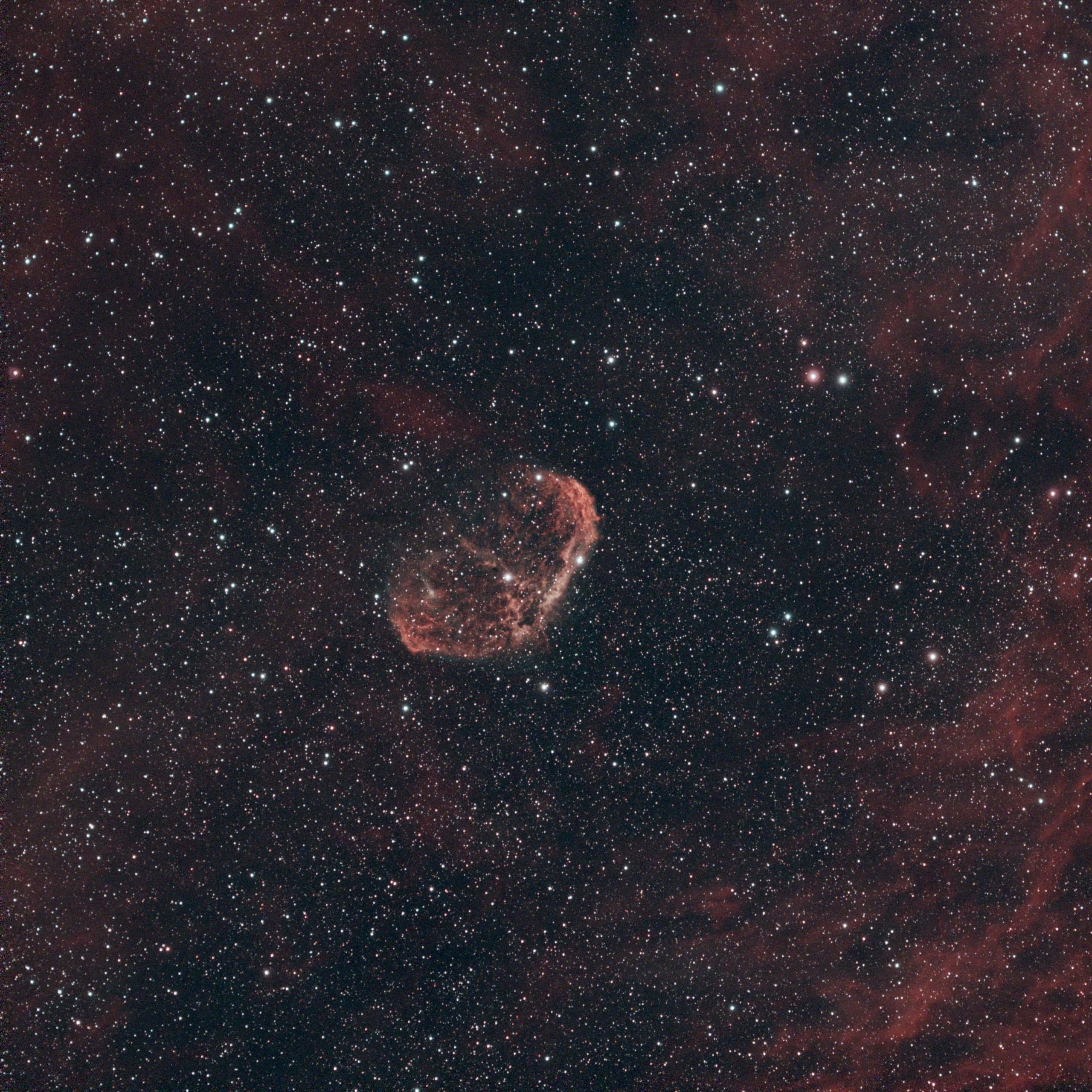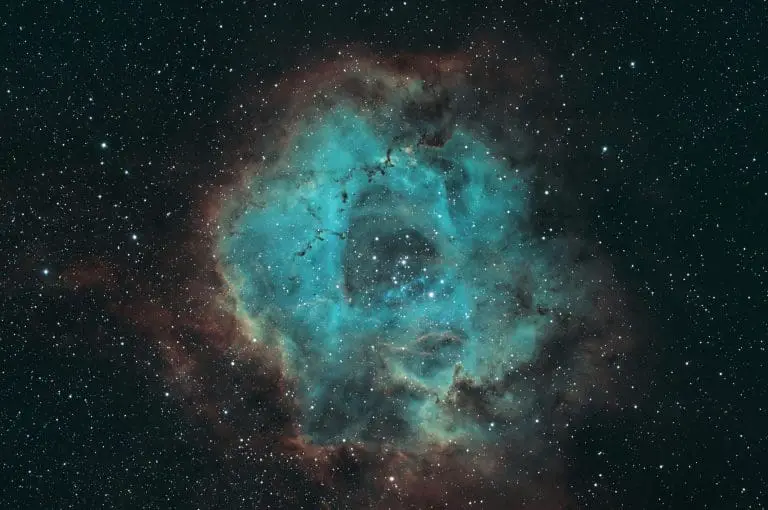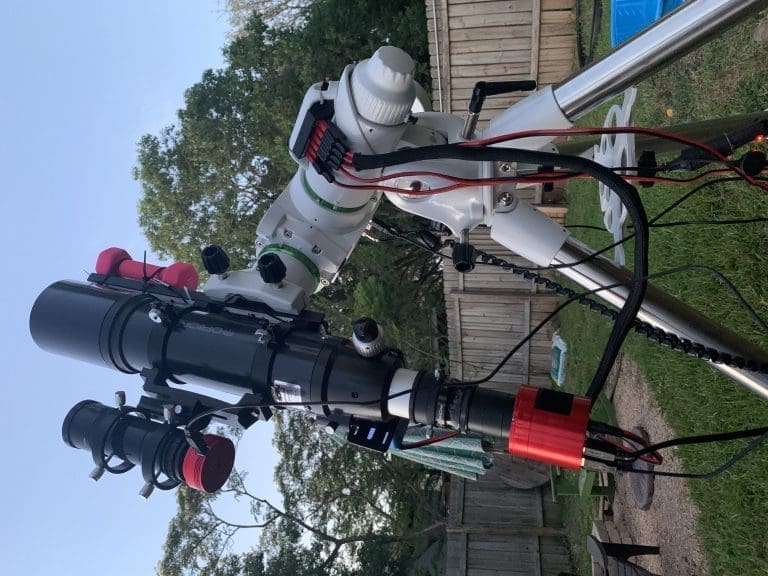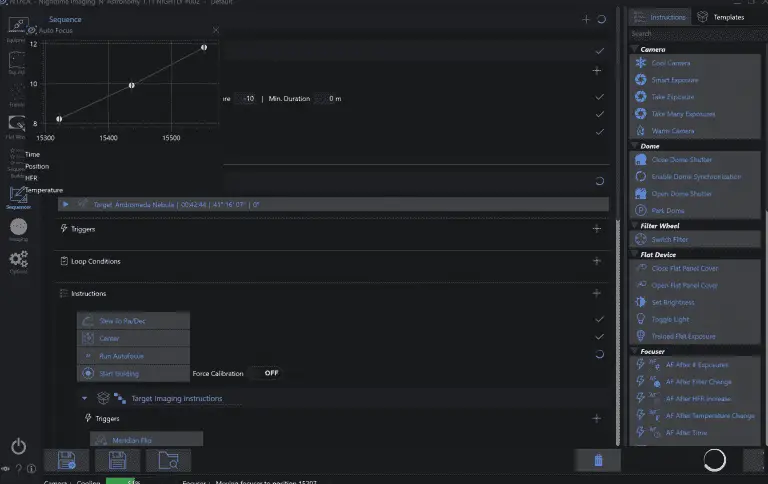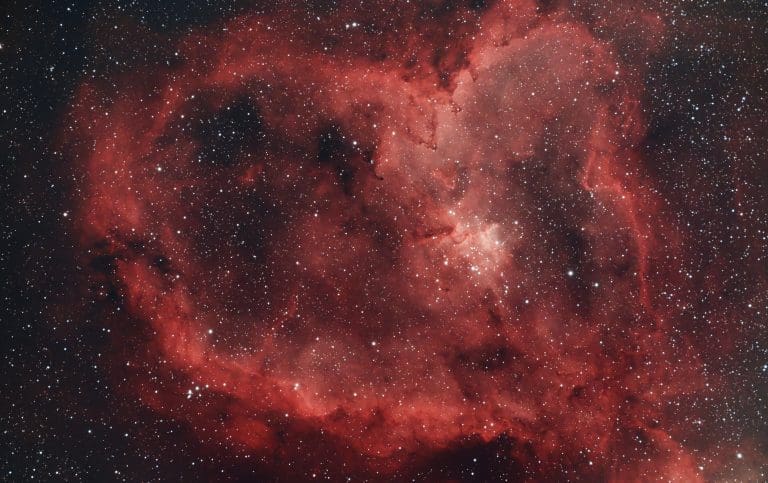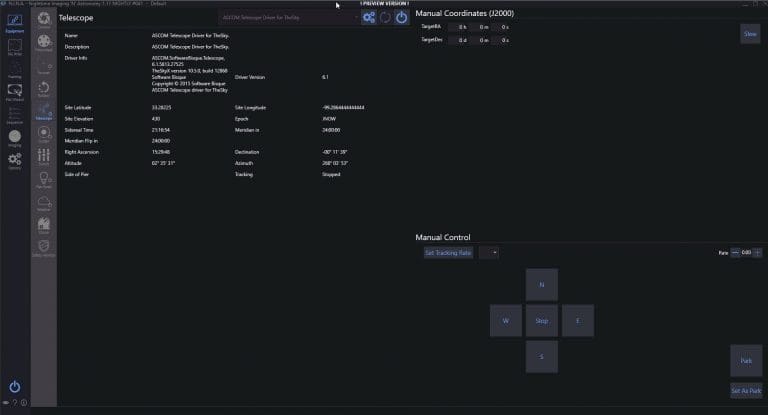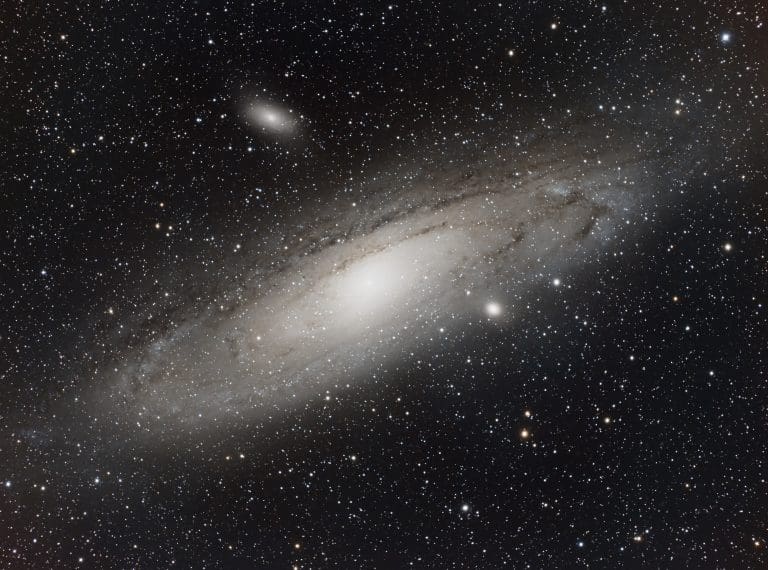Exploring the Majestic Crescent Nebula
What better reminder is there of what is just beyond our vision but a part of our amazing cosmos than the beauty of the Crescent Nebula. Rising in the north western early summer skies of our home observatory in Austin Texas the Crescent Nebula brings a smile to my face every time I see it.
From my back yard, it looks like I’m imaging into a dark void – the suburban sky glow obscures the milky way and the great Cygnus nebula field – hiding it from our normal day to day lives. Hidden, but not forgotten, consumer grade telescopes, cameras (DSLR, CMOS, CCD) can be used from the comfort of your house to do what our eyes can’t do – bring you views of these amazing structures.
Crescent Nebula (NGC 6888)
The Crescent Nebula (NGC 6888) is an emission nebula about five thousand light-years away from earth. This magnificent nebula is the outer shell of a dying star that was once a red giant.
Open NGC Details:
NGC 6888
Magnitude: 7.44
Dimension: 20.0 x 10.0 ‘
Class:
Identifier: BD +37 3821,HD 192163,C27,HIP 099546,LBN 203
Common name: Crescent Nebula
Constellation: Cygnus
Coordinates: Apparent
Apparent RA: 20h12m 51.7s DE:+38°24′ 47″
Mean of the date RA: 20h12m 51.3s DE:+38°25’02”
Mean J2000 RA: 20h12m06.5s DE:+38°21′ 18″
Ecliptic L: +320°27’34” B:+56°10’50”
Galactic L: +75°28’33” B:+02°25’34”
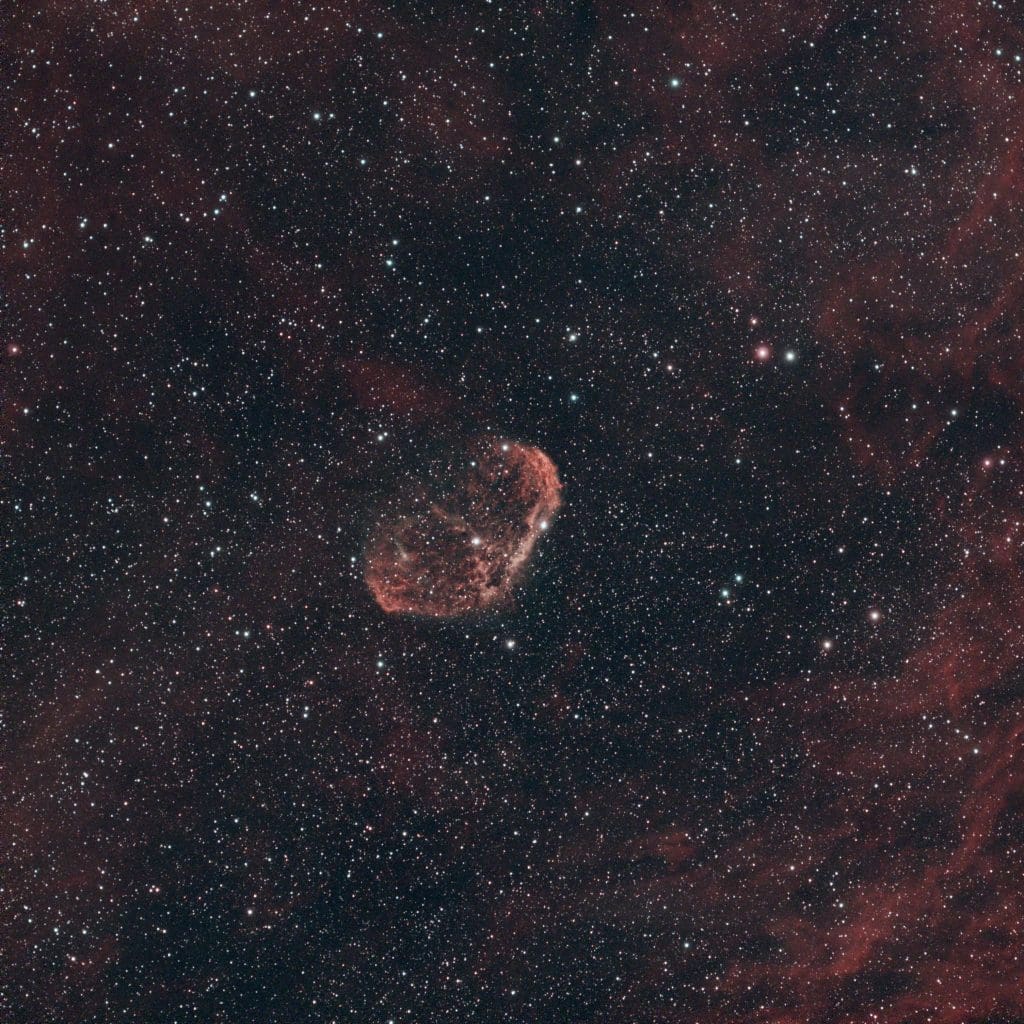
Imaging the Crescent Nebula
In broadband light (human visible), the nebula doesn’t have much detail. You will need an Ha / OIII filter to capture the delicate details of the nebulosity (or have extremely dark skies). Our image was taken with a cooled color camera.
- ASI 533 Color Camera cooled to -5c
- 20 x 5-minute subs
- 2″ Optolong L-Enhance dual band filter
- Orion ED80 Telescope
- SkyWatcher EQ6r Mount
Crescent Nebula imaging difficulty
Moderate – Most of the difficulty with this nebula is filtering out light pollution and post processing. This is a great beginner target, and it doesn’t require expensive telescopes to image. A short focal length is great for this object to catch surrounding nebulosity and the detail will still shine through.
I’m a complete beginner in my astrophotography journey – Imaging the Crescent Nebula was an amazing experience. Waking up in the morning to grab my subs, stack them and see this come out put a smile on my face that I remember every time I look at these photos.
Crescent Nebula with No Filters
This is an image in “broadband” light. Without filters reducing sky glow, light pollution, and light from neighboring stars it is hard to pick up the Ha and OIII emission from this nebula and nearby nebulosity. It is recommended that you have dual band filter for color camera or narrowband filters for monochrome cameras to capture the most detail from this nebula.
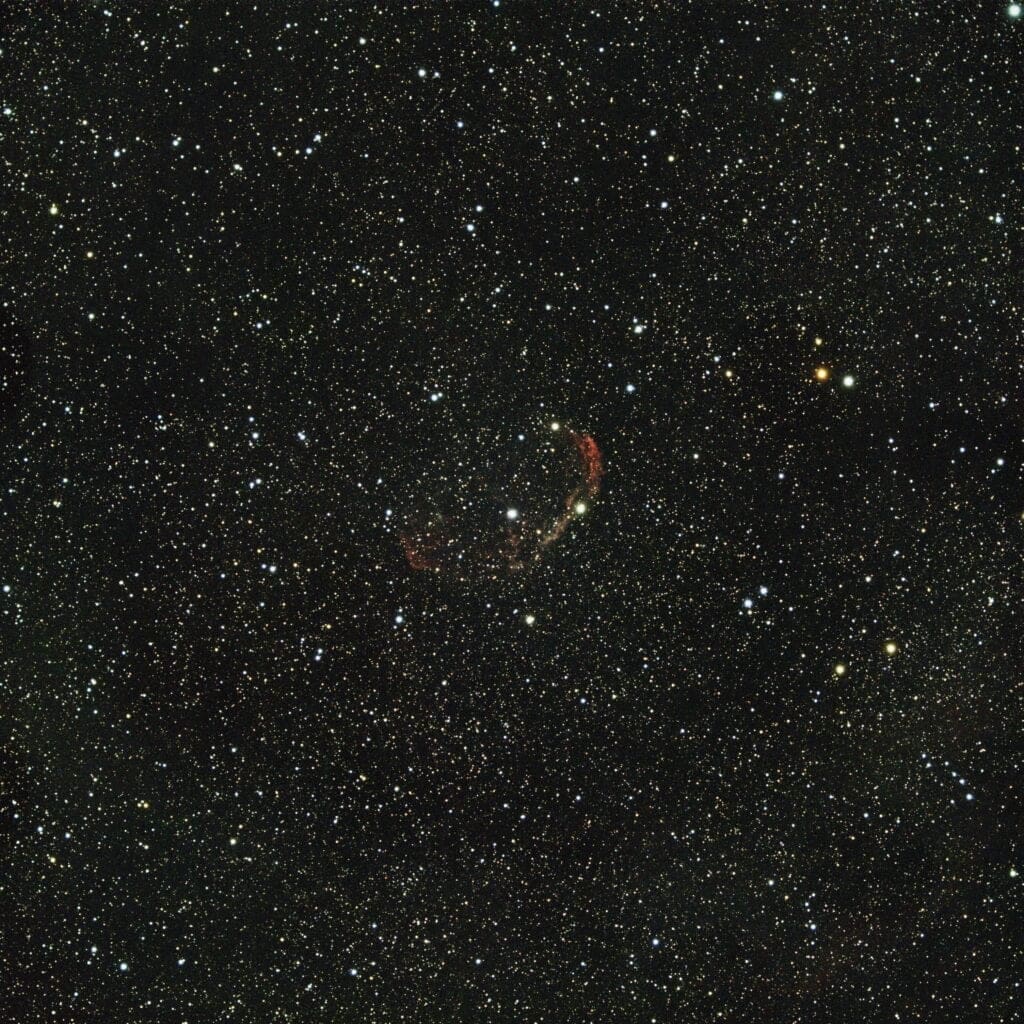
While still beautiful, you can see the minute details are very hidden and the nearby Cygnus nebulosity is nonexistent.
We’ll be sure to get more time on this Nebula! There is a faint blue shell surrounding the red nebulosity that we haven’t been able to capture from our backyard. Once we visit a dark-sky site we’ll be sure to capture more time on this beautiful nebula and update with another image.
Remember to slow down, visit a dark sky, and look up. Enjoy the cosmos and all the wonders we often forget!

